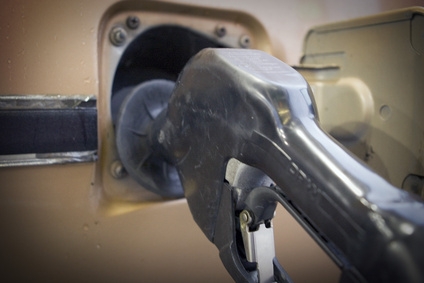
Fuel tanks hold gasoline or diesel for use in boats, trucks, cars, and other hydrocarbon-powered vehicles. Tanks are typically composed of fiberglass, aluminum, steel, or plastic. If a tank has significant damage, then it usually must be replaced with a brand new unit. If the unit only has a couple small holes or rust spots, then it may be repaired using epoxies, which are thermosetting polymers that include a resin and a hardener, or bonders.
For metal fuel tanks, a high temperature, high-pressure bonder or epoxy must be used. Magic Metal Bonder can withstand up to 180 degrees Fahrenheit, and has an impact resistance of 3,000 lbs. per square inch. To make the repair, users must prepare the area around the hole by sanding it smooth. All gasoline and gasoline vapors must be removed from the tank before sanding, or sparks can cause an explosion. Repair workers must cut a piece of metal the same size and apply the metal bonder to the back of the piece and the area around the hole. The metal bonder between the tank and the piece of metal will harden, eliminating the gas leak.
Phenol Novolac Epoxy gas tank sealer works with steel, aluminum, and fiberglass fuel tanks. The tank must first be cleaned by pouring a pint of acetone into it. This acetone must be swished around the tank and poured out in order to ensure that all gasoline residue is removed. Duct tape must be applied to holes in the tank, which will stop the gas-tank sealer from leaking out of the tank before hardening. The Phenol Novolac Epoxy will then be poured into the tank, and the tank must be rotated for several minutes. This epoxy works by coating the interior of the gasoline tank with a water proof sealant which will plug up minor holes and cracks.
J-B Weld is a type of cold weld epoxy that forms a strong bond with metals, fiberglass, and plastics. J-B Weld may be applied to holes and cracks in gas tanks in order to create a gasoline-proof barrier that will stop leaks. Holes should be sanded first, for the strongest weld, or the epoxy will bond to rust or weak metal. This can cause a new leak in the future. The product can be sanded after application in order to create a uniform appearance with the rest of the tank. Gasoline tank repair with J-B Weld should last for years before the tank must be replaced.